
Visual Art |
Up |
Prev |
Next |
"Magenta", the hue, is exactly halfway between Red and Blue. It is one of the Subtractive Primaries and is the "M" in the printers' "CMYK" system. It is formed in the brain by equal stimulation of both the blue and red sensors in the eye and like all the subtractive primaries, is very bright on the computer screen. Other than the crucial colour "Magenta" it also contains the famous colour: "Purple".
The colour name "Magenta" was first applied to fuchsine, an aniline dye, in 1859 after the French victory in the Battle of Magenta in Italy. The colour of this original "Magenta" was much redder than that used here. Here is yet another case of the ham fisted altering of colour names but since it has been anointed by the worldwide union of printers and since no one uses the red version anymore we might as well stick with the modern definition.
As is the case with Pink, examples of Magenta hue are a little rare in nature. Other than a few flowers, sea life and vegetables, there is not much to be found. It is a different story in the modern world of Art and Fashion though, where this bright and lovely colour has become very popular.
There has been a lack good pigments and dyes for Magenta from the beginning, so it has not been represented in painting and clothing until recently. This has not been a great problem in the art world however as it is rare in nature. Darker and duller colours in this hue have been possible however with traditional pigments including: Alizarin obtained from the Madder root and Tyrian Purple (very expensive) from the Murex sea snail.
Today there are spectacular bright magentas available such as: Quinacridone Magenta, and Aniline as well as the traditional forms.
| Light Magenta | Dahlia "Croydon Lilac" | Pale Magenta Fish |
| HSB 300°, 27%, 100% RGB 255, 186, 255 |
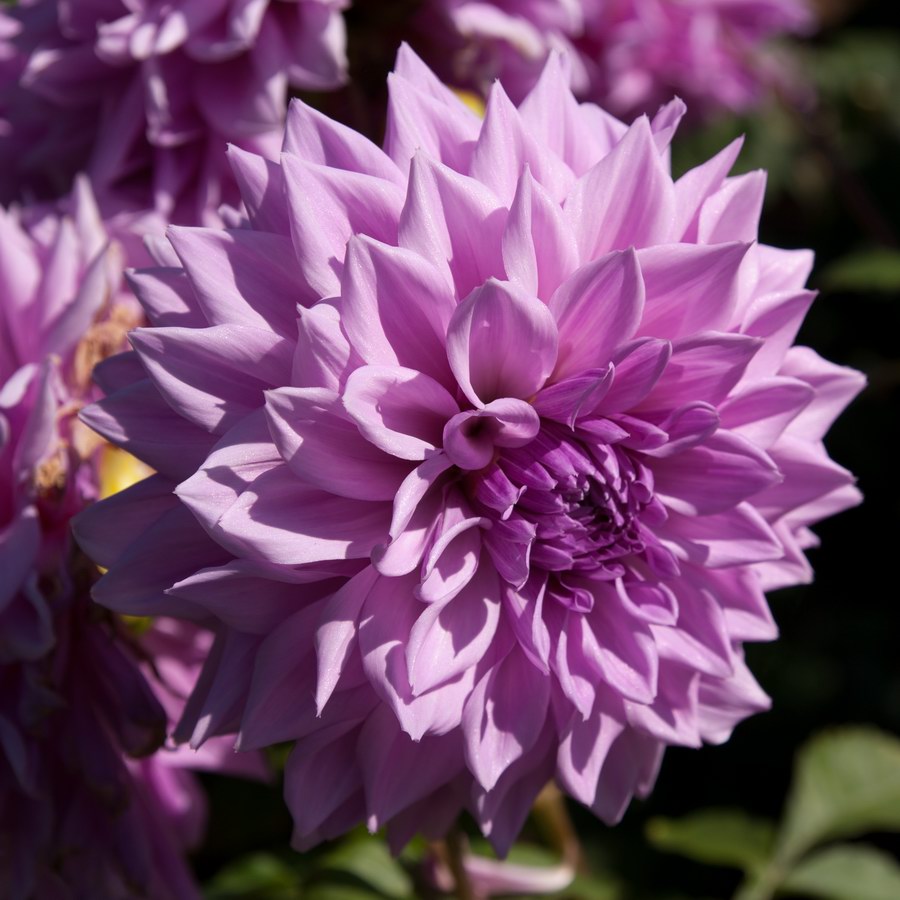 |
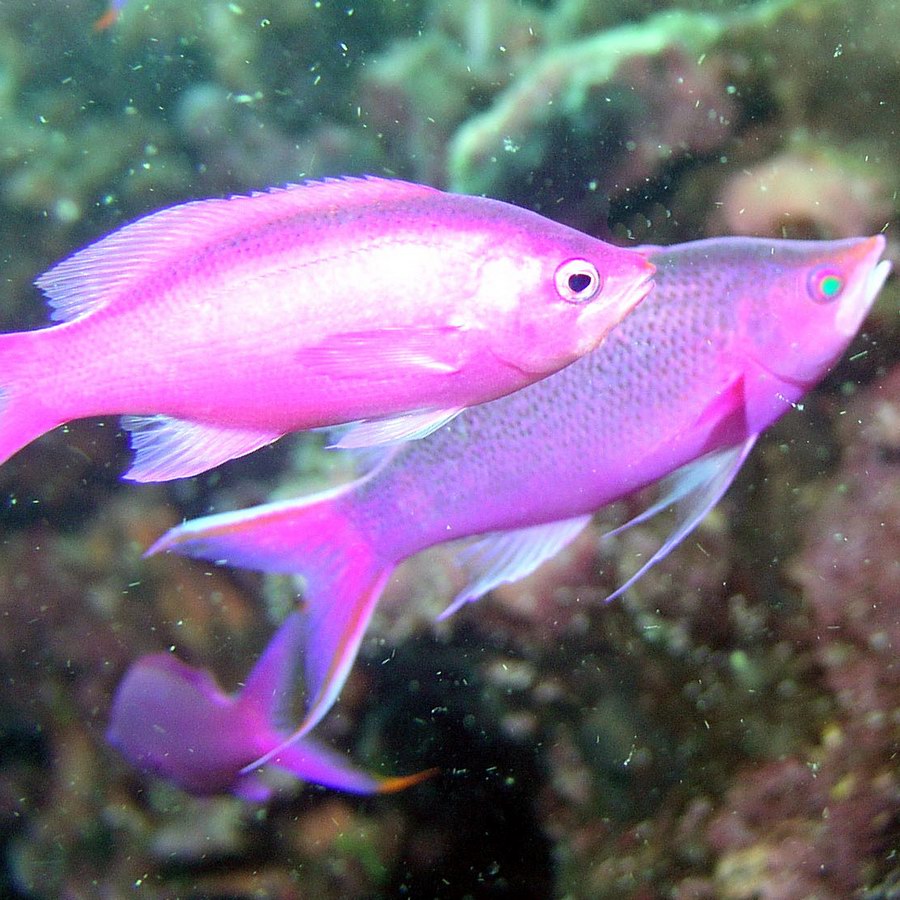 |
| "Light Magenta" is the colour of a few flowers and a few fish. | Dahlias are a genus of tuberous herbaceous flowering plants from Central America. They have been cultivated intensively for at least 200 years and their magnificent flowers come in a large array of sizes and shapes and a vast array or bright colours, every hue from Purple to Yellow, perhaps the widest and brightest array of colours from any single genus. This one is named "Croydon Lilac". | Fish come in a bewildering array of colours. This one is a pale magenta. |
| Magenta | Magenta Daisy | Pink Phlox |
| HSB 300°, 100%, 100% RGB 255, 0, 255 |
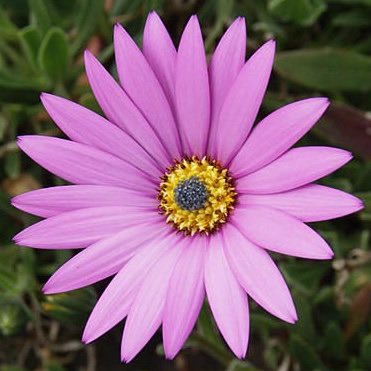 |
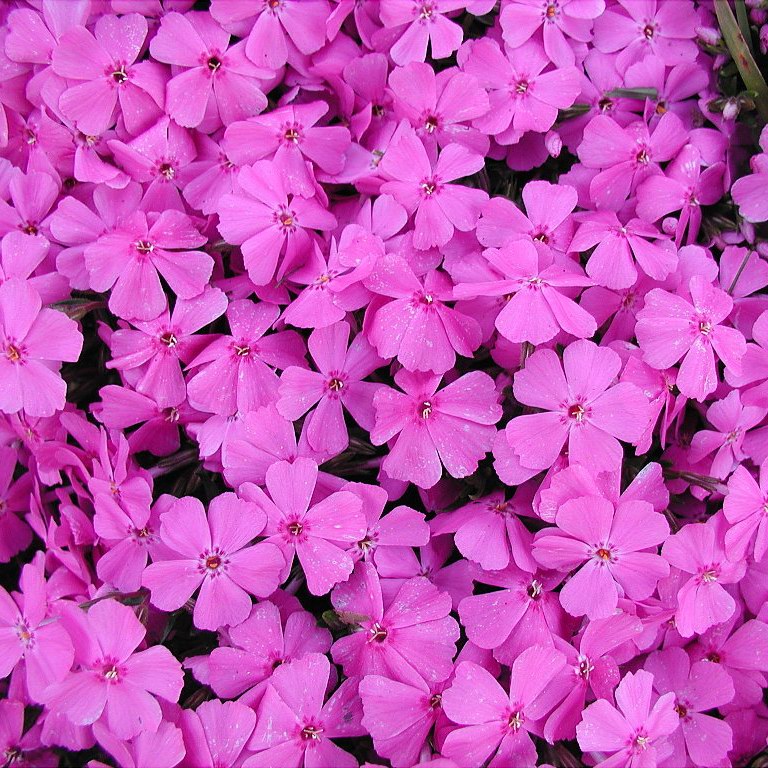 |
| "Magenta" is the full intensity of red and blue light combined. It is the colour of numerous flowers and a few exotic fish. Some famous flowers not included are: Magenta Bougainvillea, Magenta Orchid, Osteospermum jucundum Compactum, Pink Cosmos, Sweet Pea, Purple Loosestrife & Scotch Thistle. Also left out is the Magenta camouflage fish. | Osteospermum, aka Blue-Eyed Daisy, is a genus of African Daisy popularly cultivated around the world for their striking long lasting flowers. This light Magenta cultivar is Osteospermum jucundum Compactum. | Phlox are a genus of perennial and annual flowering plants. Their flowers range in hue from blue to red and many are scented. Originally native to North America they have been adopted by gardeners around the world who are drawn to their wonderful colours and other characteristics. This example is a stunning pure magenta. |
| Dark Magenta | Polygala Myrtifolia | RGB Addition |
| HSB 300°, 100%, 67% RGB 171, 0, 171 |
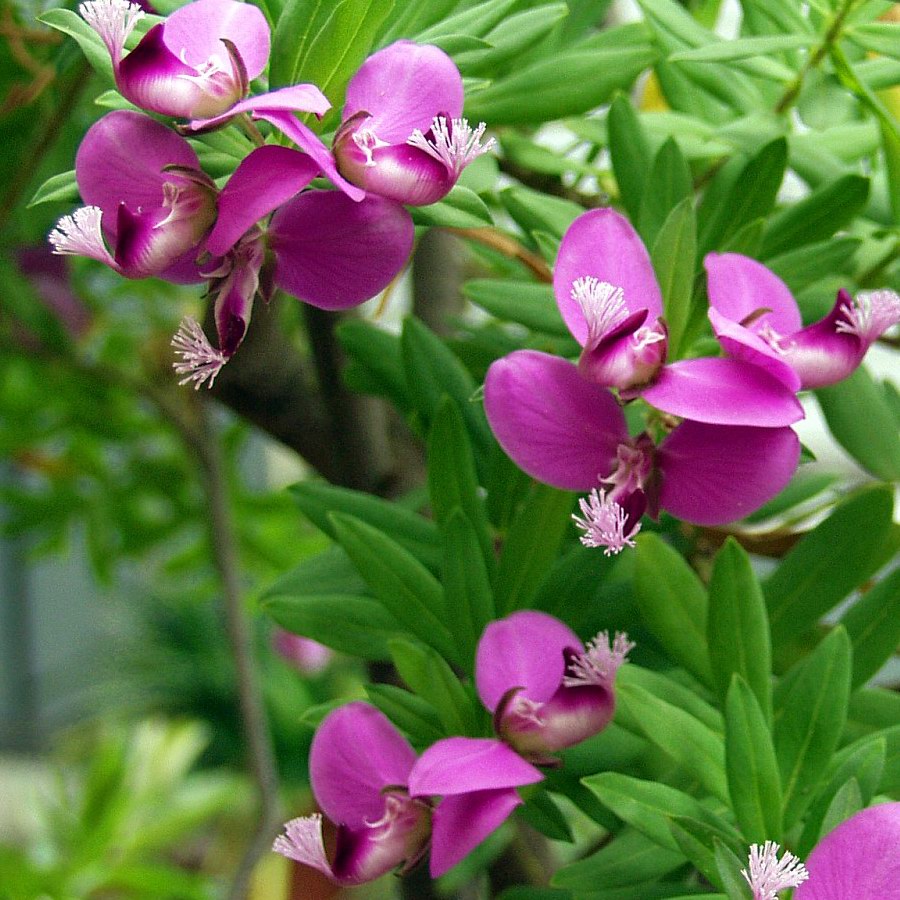 |
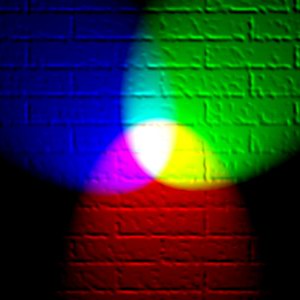 |
| "Dark Magenta" is the colour of a few flowers and is also used for women's fashion. | "Polygala Myrtifolia" is a shrub from the coast of South Africa. Like various other South African plants it has become a major environmental pest in Australia. It displays this attractive smallish flower though which is a dark magenta. | Anyone who doesn't accept the RGB model of colour by light addition should consider this photo. here Red, Green and Blue lights have been combined to yield Magenta, Cyan and Yellow, with White in the centre. |
| Light Purple | Purple Cauliflower | Orchid Dottyback |
| HSB 300°, 100%, 54% RGB 138, 0, 138 |
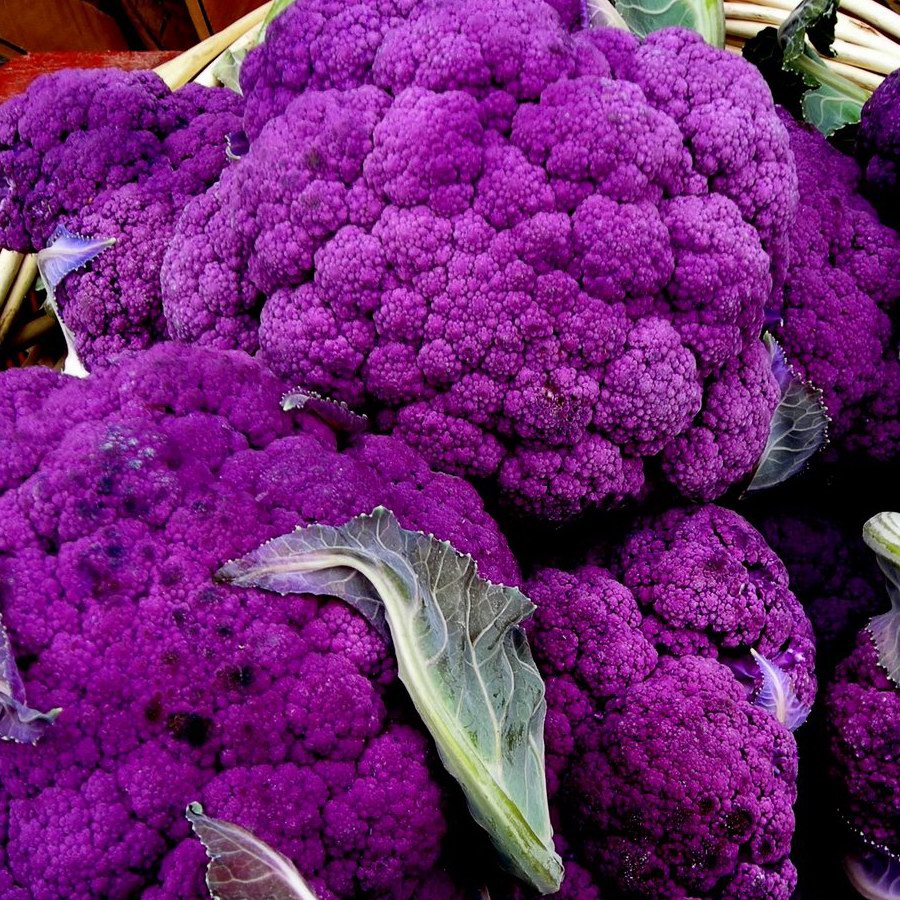 |
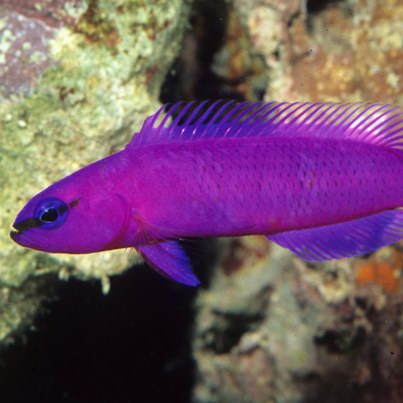 |
| "Light Purple" is the colour of a few flowers, a few forms of sea life, some vegetables and women's fashion. In particular the humble turnip exhibits a Light Purple on its upper side. | Cauliflower (Brassica oleracea) is a vegetable that is widely cultivated for its large edible immature flower head or curd. As it has been cultivated for many hundreds of years it is not surprising that it comes in various colours. The white curd varieties are by far the most common but there are also a number of purple curd varieties. This is the mid hue of the 3 main purple colours. The "Purple Bougainvillea" cultivar is probably the most common. | Orchid Dottyback (Pseudochromis fridmani) is a small fish of the Red Sea which is widely used as an aquarium pet. Its two predominant colours are Light Purple (the pinker hue) and Aniline. If you are confused about the difference between these two adjacent hues you need only examine this fish. |
| Purple | Purple Tulip | Purple Dress |
| HSB 300°, 100%, 33% RGB 84, 0, 84 |
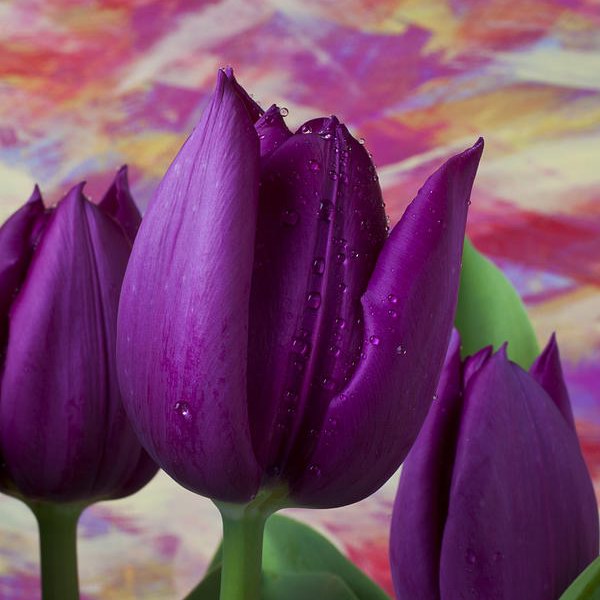 |
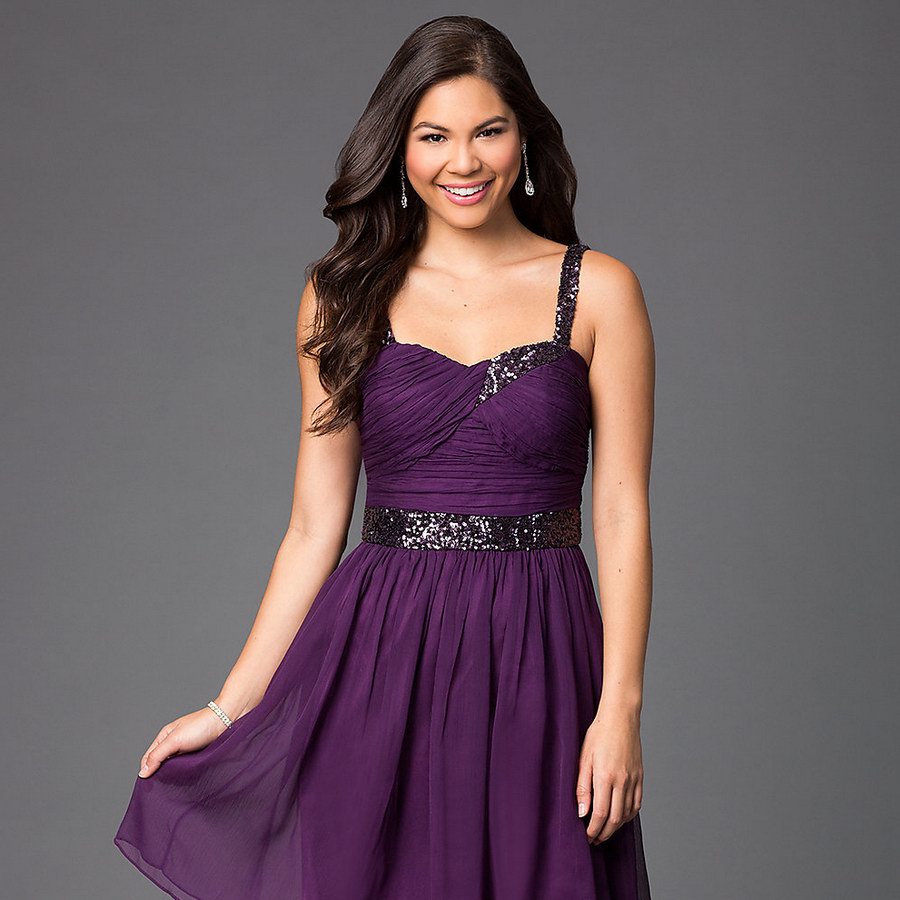 |
| "Purple" is the colour of some root vegetables and is widely used in women's fashion. The name "Purple" is traditionally the colour of royalty although that probably referred to Aniline rather than this colour. Nevertheless, true Purple is a powerful and memorable colour and loved by devotees the world over. | Tulips come in a vast range of colours which is one of their great attractions. This specimen is a true Purple. | Purple is a popular colour in fashion circles and this dress is a good example of the true colour. You will also find dresses of this shade in the adjacent hues such as Purple Bean and Amethyst. |